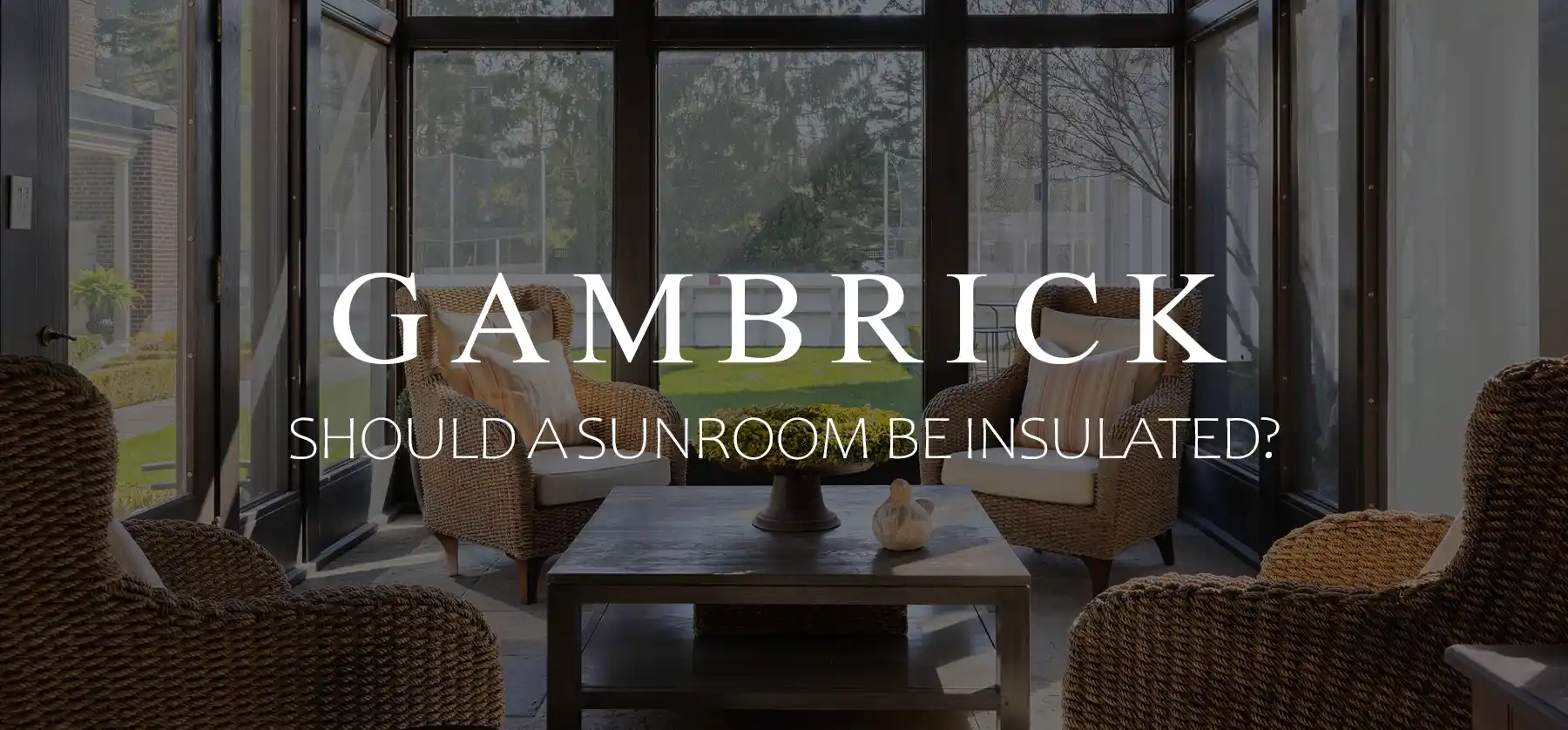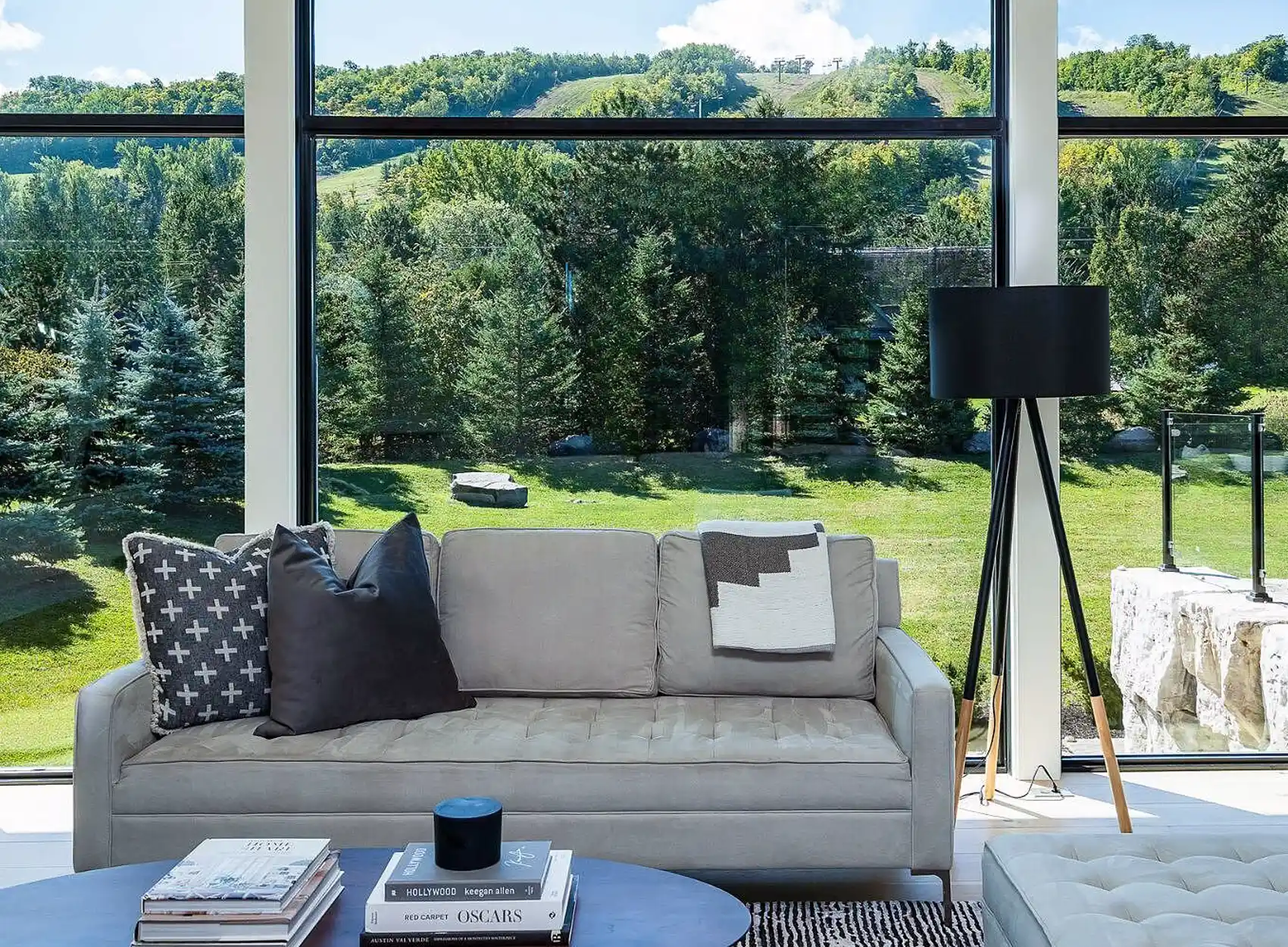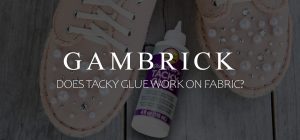
Should A Sunroom Be Insulated?

By John Mazzuca | About | More Posts |
John Mazzuca is a custom home builder with over 25 years experience in the construction industry. John has designed, managed, and built hundreds of homes & construction projects.
A sunroom should be insulated because it helps regulate temperatures inside the room in both Summer and Winter months. This makes the sunroom more comfortable and energy-efficient year round. Insulation is essential for a sunroom, especially if it’s intended to be a four-season space that’s usable all year. Without proper insulation, a sunroom can become too hot in the Summer and too cold in the Winter, which not only affects comfort but can also lead to increased energy costs as you try to heat or cool the space.
Insulation helps keep the sunroom warm during the Winter and cool during the Summer by reducing heat transfer. This creates a more stable and comfortable environment.
By maintaining a consistent temperature, insulation reduces the need for additional heating and cooling, which can lower energy bills.
Proper insulation can also help prevent condensation, which occurs when warm, moist air meets a cold surface. Condensation can lead to mold and mildew problems, so insulation helps keep the sunroom dry and healthy, as well as increasing its longevity.
Insulation can also help to dampen noise from outside, making the sunroom a quieter space to relax.
With insulation, a sunroom becomes a more functional part of the home, which makes it a better long term investment with a higher ROI.
I’ve been a NJ sunroom contractor for over 25 years and can tell you firsthand how important insulation is. When insulating a sunroom, it’s important to consider all aspects of the space, including the walls, floor, ceiling, and windows. Use high-performance glass with low-emissivity (low-E) coatings and argon gas fills to provide even more insulation. This is very important considering how much glass the typical sunroom has.

Do Sunrooms Need Insulation
A sunroom doesn’t need insulation by code. Uninsulated sunrooms are called three seasons rooms and are designed for Summer, Spring, and Fall. But insulation is a huge benefit because it regulates internal temperatures inside the room, making it more comfortable. Insulation not only makes the room warmer in Winter but also cooler in Summer, which reduces the need for heating and cooling.
Insulation is essential for a sunroom if it’s a four-season space that’s usable in Winter. Without proper insulation, a sunroom can become too hot in the Summer and too cold in the Winter, which not only affects comfort but also leads to increased energy costs as you try to heat or cool the space.
The benefits of insulating a sunroom include:
- Temperature Control: Insulation helps keep the sunroom warm during the Winter and cool during the Summer by reducing heat transfer. This creates a more stable and comfortable environment.
- Energy Efficiency: By maintaining a consistent temperature, insulation reduces the need for additional heating and cooling. This can lower energy bills.
- Condensation Reduction: Proper insulation helps prevent condensation, which occurs when warm, moist air meets a cold surface. Condensation can lead to mold and mildew problems, so insulation helps keep the sunroom dry and healthy.
- Noise Reduction: Insulation helps dampen noise from outside, making the sunroom a more relaxing space.
- Increased Usability: With insulation, the sunroom becomes a more functional part of the home that can be enjoyed regardless of the weather outside.
When insulating a sunroom, it’s important to consider all aspects of the space. Add insulation to the walls, floor, ceiling, windows and doors. High-performance glass with low-emissivity (low-E) coatings and argon gas fills can provide even more insulation, which is important in a room full of glass.
What Is The Best Way To Insulate A Sunroom?
The best way to insulate a sunroom depends on whether or not it’s already built. If the sunroom is already built, seal all gaps with weatherstripping and exterior grade flexible caulk to block drafts. For sunrooms under construction, use insulated glass for windows and doors, apply thermal breaks, and install floor, wall, and ceiling insulation.
If your sunroom is under construction, do the following:
- Use double or triple-pane windows with low-emissivity (low-E) coatings that are filled with inert gases like argon or krypton to minimize heat transfer.
- Use construction materials that include thermal breaks to reduce conductive heat loss. These are barriers between exterior and interior materials that prevent heat from passing through.
- Install spray foam or batt insulation in all wall, ceiling, and floor cavities with high R-value insulation to keep the heat in during Winter and out during Summer.
- Seal all gaps and cracks.
If your sunroom is already built, do the following:
- If the sunroom uses single-pane glass, consider replacing them with insulated glass units.
- Use storm windows or thermal curtains as a temporary measure.
- Use caulk and weatherstripping to seal any gaps around windows, doors, and where the sunroom connects to the house to prevent drafts.
- Install thermal blinds or heavy curtains that can be closed to insulate the sunroom.
- Portable insulation panels can be used temporarily to add extra insulation during colder months.
Regardless of when insulation is added, it’s important to consider the specific needs of the sunroom, such as its orientation, the local climate, and how the space will be used. Professional advice can be invaluable in determining the best insulation strategy for your sunroom.
How Much Does Insulating A Sunroom Cost?
A typical 250 sq. ft. four season sunroom costs around $1,500 in materials to insulate the wall, floor, and ceiling cavities with batt insulation. We use at least R-19 to R-23 in the walls and R-30 to R38 in the floors and ceilings. Spray foam insulation costs about double, or $3,000 per sunroom.
Once the cavities are insulated, we use spray foam to seal all the little cracks and gaps from the inside. This can cost around $100.
From the exterior, we use caulk to seal any small gaps are windows, doors, and where the sunroom meets the house. Add another $100 for this.
Insulated windows and doors are a big expense since a sunroom uses so many of them. Depending on the manufacturer and quality of the glass you use, an insulated sunroom could easily cost $10,000 to $20,000 more than a non-insulated one. Double that amount if the glass is custom or triple pane.
Last, factor in labor. Applying batt insulation, caulk, and spray foam is easy and can be done DIY, so it’s cheap to install. Figure $500 to $1,000 in labor. But if you hire a company to install spray foam it could be several thousand dollars.
How much it costs to insulate a sunroom depends greatly on the design. Some all all glass, which means they require no cavity insulation in the walls and roof at all. But some are built more like a traditional addition and need more insulation.
When figuring insulation into your budget, make sure to consider the size, style, intended use, and design of the room because it affects the type, amount, and R-values of the insulation you’ll need.
What Kind Of Insulation Is Best For A Sunrooms?
The best type of insulation for a sunroom is either spray foam or batt. It should be applied in all wall, ceiling, and floor cavities. The R-values we use are between R-19 and R-23 in walls and R-30 to R-38 in ceilings and floors. You can use higher insulation in extremely hot or cold climates to keep the sunroom cooler or warmer depending on where you live.
The best insulation for sealing small gaps and cracks is spray foam. Use it before applying either batt or spray foam. Seal the small gaps around windows and doors, where the floor framing meets the floor, and where the sunroom attaches to the house.
From the exterior, use exterior grade caulk around all the windows and doors, and where the sunroom attaches to the house. This helps keep drafts and water out.
Possibly the most important type of insulation you can use in a sunroom is insulated glass. Because a sunroom uses so much glass, the properly insulate it you need high quality windows. Use double or triple pane insulated glass with an insulated frame. Make sure the windows have low-emissivity (low-E) coatings that are filled with inert gases like argon or krypton to minimize heat transfer.
If you have any questions or comments email or leave a comment down below.

John Mazzuca | About | More Posts |
Custom Home Builder
John Mazzuca is a custom home designer and builder at Gambrick with over 25 years experience in the construction industry. John has designed, built and/or remodeled hundreds of homes, small buildings, and commercial projects. He writes about business, real estate, home building, and household electronics. His work has been featured in Fox Business, Better Homes & Garden, House Beautiful, and more.




















